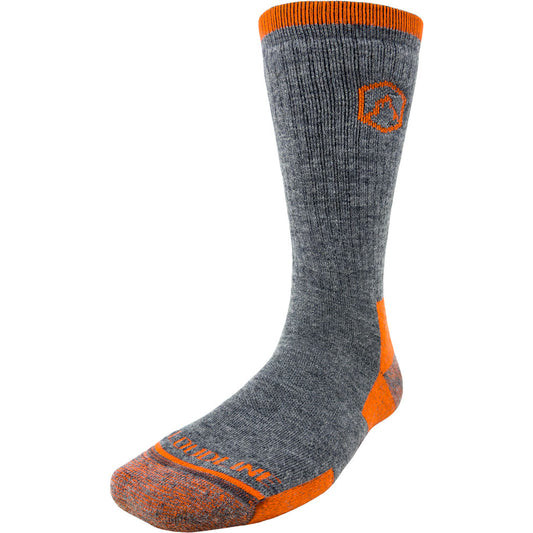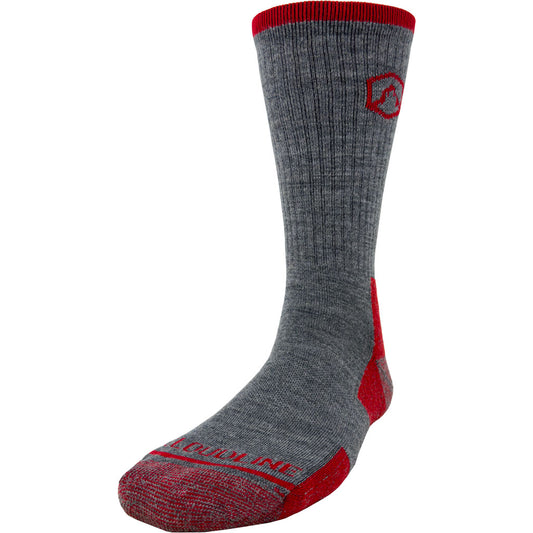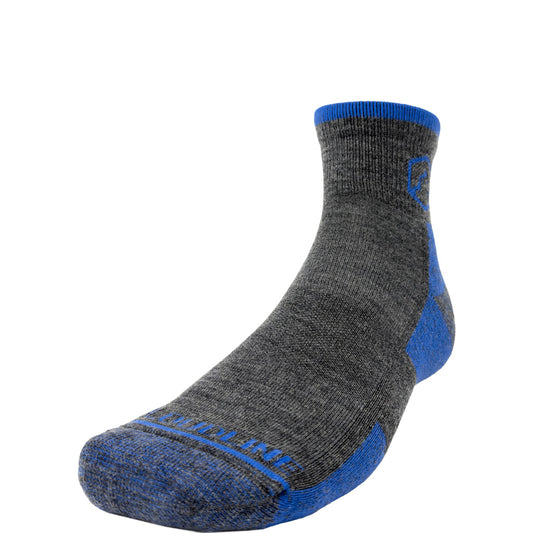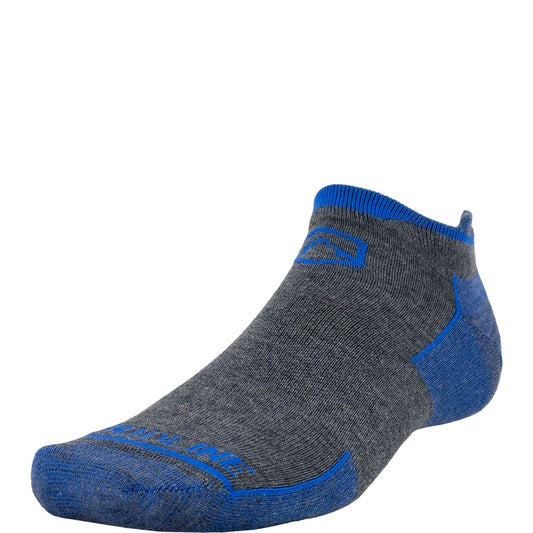
Why We Love Merino Wool – Plus 7 Benefits of Wearing it on the Trail
When you spend a lot of time outdoors, you know that what you wear matters. You’ve learned this lesson the hard way — getting caught in the rain in a cotton shirt, neglecting to layer properly, or wearing socks that give you painful blisters. And while you love being in nature for the joy and simplicity it brings, uncomfortable clothing can sometimes get in the way.
There is some strategy when it comes to dressing for the outdoors, and the right clothes can make all the difference. If there’s one material that makes for soft, versatile, and low-maintenance clothing, it’s merino wool.
At Cloudline, we use merino wool to make our socks and base layers. And while we’ve been loving this material for years, we wanted to share just how great it is.
What Is Merino Wool?

Merino wool comes from merino sheep. These sheep are known for surviving in extreme temperatures — both hot, sunny summers and freezing cold winters. Australia, New Zealand, South Africa, and South America are some of the biggest producers of merino wool.
A natural fiber, merino wool is a popular choice for technical outdoor clothing — especially as socks and base layers. It’s much softer than regular wool, so you can wear it against your skin without an uncomfortable itch.
Merino wool fibers are porous, meaning they can easily absorb moisture from your skin. This keeps you dry when you start to sweat.
Merino wool is a low-maintenance, natural, and comfortable material that makes great clothing for the outdoors. Here are some of the major benefits of wearing merino wool on the trail.
7 Benefits of Merino Wool
1. Merino wool wicks moisture

As we mentioned above, one of the top benefits of merino wool is how well it wicks moisture, leaving you dry and comfortable when you’re working up a sweat. Unlike synthetic fibers, which wick your sweat in its liquid state, merino wool wicks sweat as a vapor — keeping you even drier. Merino wool can absorb almost a third of its weight in moisture before it starts to feel wet.
2. Merino wool is odor-resistant

One of the reasons merino wool is such a great fabric for outdoor clothing is that it’s odor-resistant. That means that you can wear a pair of merino wool socks or a merino wool base layer for days on the trail without it smelling ripe. Merino wool gear comes in handy when you’re a few days into a backpacking trip and haven’t had time for a wash — plus, your hiking companions and tent-mates will thank you.
3. Merino wool helps regulate your body temperature

Just like those merino sheep flourish in both hot and cold environments, you can wear merino wool in all kinds of weather. In fact, merino wool helps regulate your temperature. Because it wicks moisture away when you sweat and traps air to insulate you when you’re cold, merino wool clothing is ideal for outdoor adventures at any time of year.
4. Merino wool is wrinkle-resistant

You might not be worried about the state of your clothing after a week in the backcountry. But merino wool’s natural wrinkle resistance makes it a perfect choice for travel and everyday wear. Each merino wool fiber has a natural crinkle that springs back to release wrinkles after being folded in a carry-on or wadded up in a backpack. When it's time to change just pull it on and the wrinkles will fade as the shirt warms to your body temp and begins to wick moisture away from your skin.
5. Merino wool is soft, comfortable, and lightweight

When you think of wool, you might think scratchy, itchy, and heavy. You’re not wrong, exactly — but merino wool is different. Because merino wool fibers are much finer and softer than regular wool, it won’t irritate your skin by itching and scratching. It’s soft enough to wear directly on your skin, where its natural wicking abilities will keep you dry. Merino wool is lightweight, too. You can wear it on its own or layer it without feeling bulky.
6. Merino wool is good for the planet

As outdoor enthusiasts, it’s important to think about the impact our activities and gear have on the planet. Lucky for us, merino wool is a practical and sustainable fiber that has environmental benefits. Merino wool is not only a natural and renewable fiber, it’s also biodegradable. That means that once a merino wool garment reaches the end of its life, it won’t sit around in a landfill forever — it only takes about a year for merino wool to degrade. And at Cloudline, we exclusively use wool that’s certified by the Responsible Wool Standard (RWS) so you can feel good knowing your socks came from sheep that enjoyed the Five Freedoms, that ensure every animals physical and mental wellbeing. Along with animal welfare, the RWS also ensures farms are following best practices for sustainable land management
7. Merino wool is easy to care for

Unlike regular wool, merino wool is low-maintenance and easy to care for. As an avid hiker or backpacker who doesn't want to spend your weekend tediously caring for your clothes, this is a huge perk. You can wash most merino wool clothing in the washing machine or on the trail — and you don’t need special detergent to do it. For tips on caring for your merino wool clothing, check out our Care & Laundry Guide or continue reading below.
How to Care For Merino Wool
You don’t need to wash your merino wool socks and base layers after every wear. That’s part of the beauty of this natural fabric. Since it resists odors, you can wear merino wool clothing several times before throwing it in the laundry.
When you do need to wash your merino wool clothing, use these tips to keep your gear in great shape:
- Turn socks and clothing inside out before washing them. >This prevents pilling, which can happen when clothing is thrown around in the wash.
- Wash your merino wool in cold or cool water — hot water can shrink and weaken the wool.
- Don’t use bleach or fabric softeners. Merino wool is naturally soft, and fabric softeners can damage its natural wicking properties.
- Air-dry or tumble dry your merino wool clothing on low heat — again, high temperatures can shrink the wool.
For tips on washing your merino wool gear while you’re out on the trail, check out our Care & Laundry Guide.
Shop Merino Wool Socks and Base Layers at Cloudline Apparel

As a sustainable material with lots of technical benefits, merino wool can make your outdoor adventures a lot more comfortable. At Cloudline Apparel, we make socks and base layers with premium merino wool so you can enjoy the great outdoors to the fullest. Plus, we offer a no-hassle Lifetime Guarantee — so you can count on the fact that your clothing will last.
Next time you’re shopping for versatile outdoor clothing, check out our collections of merino wool socks and base layers — then get out and enjoy the trail.
Click here to shop through all the products on Cloudline!




